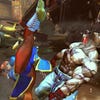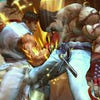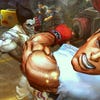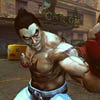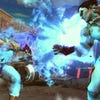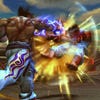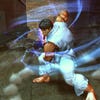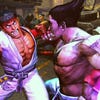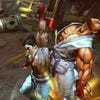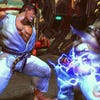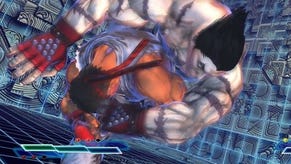Street Fighter x Tekken: the Killian opinion
What's it all about? Capcom's fighting game guru explains.
As Capcom's senior community manager, Seth Killian is charged with spreading the good word about all his paymaster's games. But it's Street Fighter IV, Marvel vs. Capcom 3 and now Street Fighter x Tekken that are his speciality. Killian knows his fighting games.
At Capcom's recent Captivate showcase event, amid the deafening roar of Hadoukens and Shoryukens, Eurogamer sat down for an eight-way chinwag with the man who is so good at fighting games that Capcom named Street Fighter IV's boss after him.
Read on to discover just what makes Street Fighter x Tekken tick – from the man who knows best.
If they play the Street Fighter characters they'll feel at home. You have a team-mate and you have to manage both of their life bars, so in that respect it's different from some other tag-team fighting games or a Marvel vs. Capcom, where if you lose one partner, the next one comes in by default.
If you lose anybody in this game you've lost the round. That's a throwback to a Tekken Tag system where you've got to keep both players alive. So it's dynamic as far as switching. You can't just focus on your one character.
There's also no built-in comeback mechanic, like an Ultra meter. You've got one bar, used for all of your different techniques, which is important. Beyond that, the Focus Attack buttons are now used to tag. You can use those tags in somewhat of a Focus-like way in terms of Focus Cancelling, so your Focus Cancelling skills will still be useful to you, but it's not quite the same thing.
You have to watch yourself, basically, and be mindful of not only where your life bar is, but what kind of damage your opponent can potentially be doing, and then find a way to bring in your team-mate safely.
You can just tag normally – it's pretty fast. But it's not completely safe. There is a little refractory period where you're vulnerable. So you want to find situations where you can tag.
One of the ways you can do that is by tagging in during a combo. You can be creative and cover your tag or, even in a block string, throw a fireball and tag behind that.
The way I find myself losing most often is because, I'll have a third life, but I'm up against a strong opponent who can do a third of a life, and given the amount of bar they have and the characters they're playing, they can easily do a third of my life.
It's not that they haven't earned it. Certainly they hit me, I lost. But I might have another character with 70 per cent life still, and it would be smarter to have them in there facing that. You have to manage that.
It's a more dynamic process. In Street Fighter it's always mano a mano. You've only got the one life bar to worry about. In most circumstances it's not coming back no matter what you do. In this game you have to look at your combined life bar and be a little smarter.
That's how I find myself losing so often, when I have the purely Street Fighter mentality. It's not that I shouldn't have lost. It's that I didn't have to lose if I'd been smarter with the tags.
It's a bit more of an in your face game because the Tekken characters don't have projectiles, for the most part. It's more of a mid-range game than a full-screen game. It's more down and dirty, where you want to be up close.
Obviously the Street Fighter characters have projectiles and those can be used in the traditional ways to make interesting match-ups. But I've focused more on the Tekken side just because they're new to me. I haven't played a Tekken game seriously since Tag. I gave up at 4.



